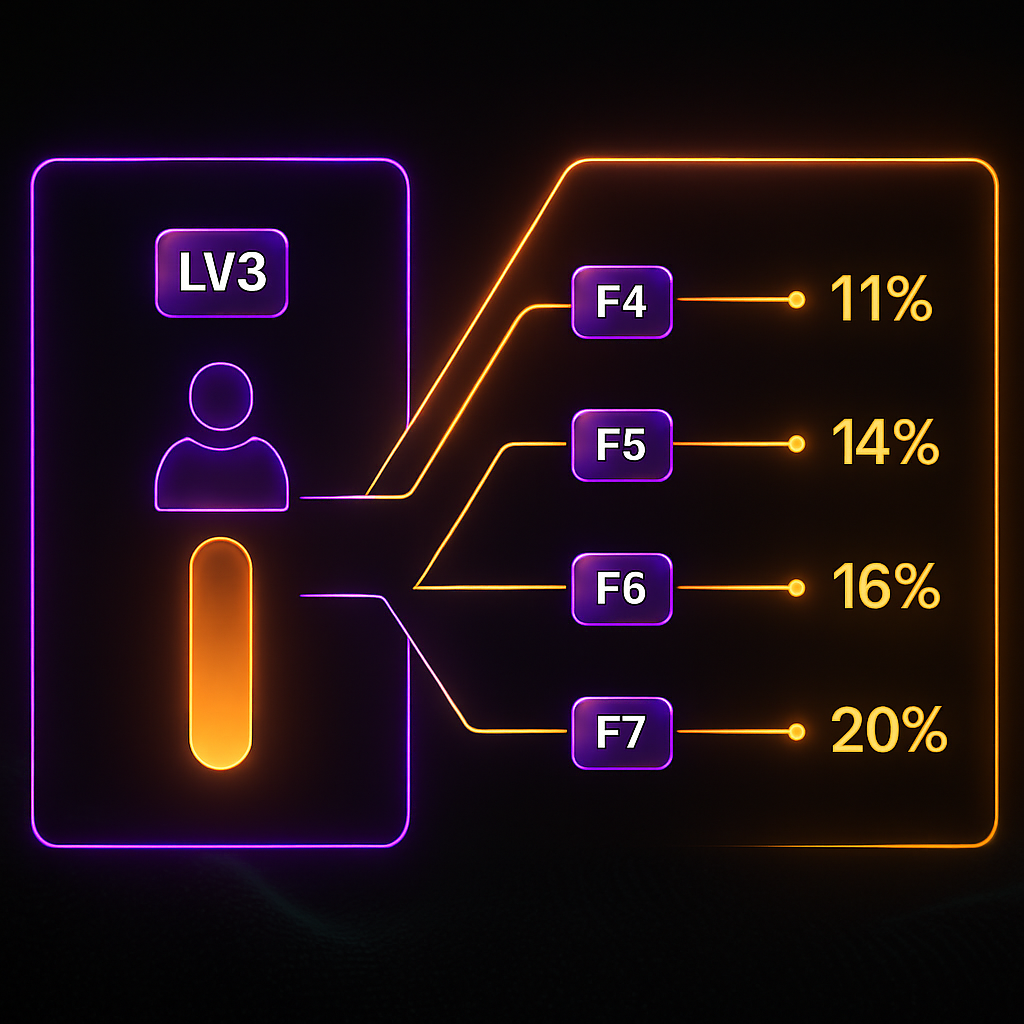Direct Commission Structure & Indirect Commission Structure

1. Direct Commission Structure
The direct reward formula is straightforward:
%LEVEL x Total Sales Volume = Direct Commission
Example Provided:
- An investor at Level 3 earns 9% commission.
- Their total downline sales (F1) equal $10,000.
- Therefore, their direct commission is:
9% × $10,000 = $900,
which is paid directly to the agent.
This mechanism ensures that users are rewarded proportionally to the volume they directly contribute through their immediate referrals. The higher their rank, the higher the commission percentage, incentivizing them to climb the affiliate ladder.
2. Indirect Commission Structure
This part is more nuanced and applies to referrals made by sub-agents in the network (i.e., F2, F3…). The formula for indirect commissions is:
(%LEVEL – %LEVEL of F1) × Sales Volume = Indirect Commission
This calculation reflects the difference in commission rates between the upper-level agent and their immediate downline, multiplied by the same sales volume. This reward is not double-paid but split based on level gaps.
Example Breakdown:
Let’s assume you are at Level 3 (9%). Several downlines have levels and sales volume of $10,000.
- Investor B (Level 4, 11%):
Commission for B = (11% – 9%) × $10,000 = 2% × $10,000 = $200 - Investor C (Level 5, 14%):
Commission for C = (14% – 11%) × $10,000 = 3% × $10,000 = $300 - Investor D (Level 6, 16%):
Commission for D = (16% – 14%) × $10,000 = 2% × $10,000 = $200 - Investor E (Level 7, 18%):
Commission for E = (18% – 16%) × $10,000 = 2% × $10,000 = $200
This step-down model maintains fairness by rewarding users only for the level difference. As a result, it promotes system-wide growth, encouraging each member to actively recruit and help their downlines level up.
3. Strategic Implications
- Network Expansion Incentive:
Since both direct and indirect commissions are level-based, participants are motivated to build a wide and deep network. - Climbing Levels Matters:
Gaining a higher level not only increases one’s own direct earnings but also expands the margin available for indirect commissions. - Performance-Based Model:
The structure favors active participants and leaders who nurture their teams. Those who support their downlines to grow still earn from the performance gap, creating a win-win loop.
Conclusion
This affiliate reward design is typical in high-performance marketing and Web3 growth systems, combining transparency, performance incentives, and layered rewards. By differentiating between direct and indirect earnings, the platform ensures both initial recruiters and long-term builders are properly compensated. The math is clear and scalable, making it an attractive model for anyone seeking to grow a sustainable passive income within a digital or decentralized economy.


